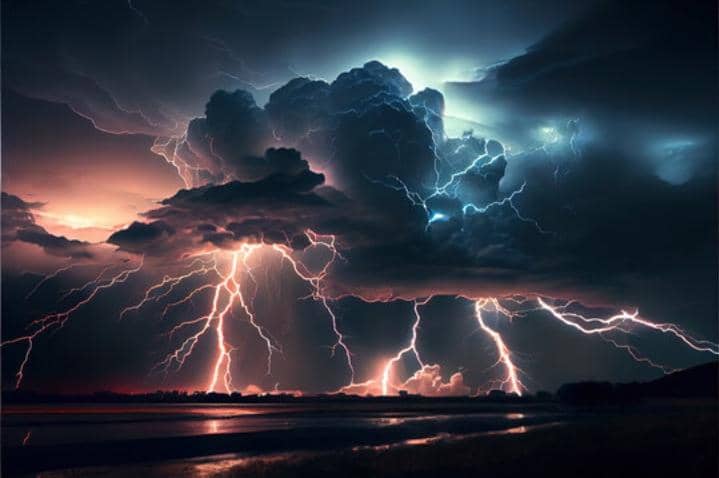Thunder and lightning are awe-inspiring phenomena that occur during thunderstorms, resulting from complex atmospheric processes. Lightning is a powerful electrical discharge between charged regions in clouds or between clouds and the ground.
This discharge generates thunder, the sound caused by the rapid expansion of heated air following a lightning strike. Together, they illustrate the dynamic interplay of nature’s forces.
The formation of lightning begins with the buildup of static electricity in storm clouds. Warm, moist air rises and cools, forming water droplets. Turbulent winds within the cloud cause collisions between ice crystals and water droplets, leading to a separation of charges: negative charges gather at the cloud’s base while positive charges accumulate at the top.
When the electric potential difference becomes too great, a discharge occurs, creating a flash of lightning.
Lightning can manifest in several forms: cloud-to-ground, intra-cloud, and cloud-to-cloud strikes. The most dangerous type is cloud-to-ground lightning, which can strike objects on Earth, including trees and buildings. Each year, approximately 400 people in the U.S. are struck by lightning, with around 50 fatalities.
A typical lightning bolt carries about 200 megajoules of energy, enough to power a small home for several days.
Thunder is produced when lightning heats the surrounding air to temperatures as high as 54,000°F (30,000°C), causing it to expand explosively.
This rapid expansion creates a shockwave that travels as sound waves we hear as thunder. The time delay between seeing lightning and hearing thunder can help estimate distance; for every five seconds counted, the lightning is approximately one mile away.
Thunderstorms are most prevalent in hot and humid regions where atmospheric instability allows for rapid formation of cumulonimbus clouds. Globally, there are about 1.4 billion lightning strikes each year, averaging 44 strikes per second.
Understanding these phenomena enhances our appreciation for nature’s power and highlights the importance of safety measures during storms to mitigate risks associated with lightning strikes.

